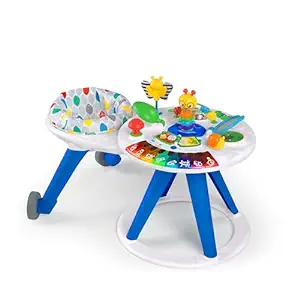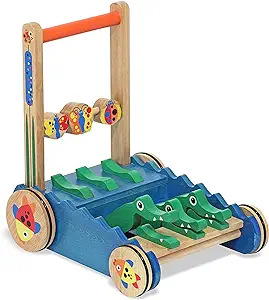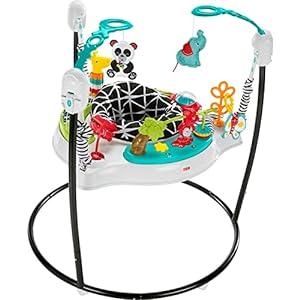
Table of Contents
Baby walkers have long been a staple in many homes. They offer children a way to explore their surroundings and develop mobility skills. However, concerns about safety and development have led many parents to look for alternative ways to support their child’s walking journey. Fortunately, several effective alternatives can provide similar benefits without the risks associated with traditional baby walkers.
Although the baby walker has been a traditional choice to help children move, concerns about safety have led parents to look for alternative options. These alternatives offer stimulating environments for children to explore and develop their motor skills without the risks associated with walking. From stationary activity centers to pushing toys and playing mats, there are a variety of options available to help your child’s developmental journey. By exploring these options, parents can provide safe and enriching experiences for their children while fostering their growth and independence.

Stationary Activity Centers:
A common substitute for baby walkers is stationary activity centers. These centers typically have a set with lights, music, and interactive gadgets all around it. It offers kids an engaging setting in which to play and explore. Static activity centers, in contrast to baby walkers, remain motionless, reducing the possibility of accidents such as falls or collisions with furniture. They inspire kids to reach for toys and participate in activities using their legs and feet, which helps kids develop motor skills in a safe and controlled way.
Toys and cars:
Push toys and cars are another great option for children learning to walk. These toys help children. When they take the first step, It helps them build confidence and balance. Toys come in a variety of designs. From simple push-walkers to interactive carts with buttons and levers. They encourage children to practice walking, providing stability and support. This makes them an ideal choice for beginners.

The Traditional Methods:
Traditional methods of promoting walking, such as tummy time and assisted sitting, can also be effective alternatives for baby walkers. Abdominal time helps to strengthen the muscles of the neck, waist, and arms; Assisted sitting promotes balance and stability. Parents can also hold their child’s hand or provide support. When they practice standing and walking, it Offers a practical approach to promoting mobility and coordination.
Encouraging natural movement:
Encouraging children to crawl, move, and explore their environment can also help promote movement and growth. Creating a safe and open space for free movement for children encourages them to explore their surroundings and develop their motor skills at their own pace. By incorporating activities such as crawling and walking into your child’s daily routine, you can support their physical development and help them reach important milestones such as walking.
Encouraging natural movement using a baby walker is essential to support the baby’s development. Parents can promote this by giving their child plenty of time for unstructured play and exploration outside of the walker. Encouraging crawling, crawling, and reaching for toys on the floor helps to strengthen muscles and build coordination. Limiting the time spent in the walker and providing opportunities for supervised floor play allows natural patterns of movement to emerge. By prioritizing non-assisted movement and motor skill development, parents can help their child’s physical and cognitive development. At the same time, baby walkers can be used as a complementary tool in their journey towards independent mobility.

Baby Jumpers and Bouncers:
Baby jumpers and bouncers offer a fun and interactive way for kids to exercise their leg muscles and develop coordination. These devices have a seat suspended by springs or elastic bands, which allows children to jump and move safely and in a controlled manner. Baby jumpers often include toys, lights, and music to entertain children while promoting physical activity and growth.
Sensory Playmates and Gyms:
Children can explore and hone their motor skills in a cozy and engaging setting with Sensory Playmates and Gyms. These mats frequently have many colors, textures, and interactive features that appeal to kids’ senses and promote activity. Kids are able to lie on their backs. Additionally, you can sit and explore the mat’s various features, which enhances coordination and muscle strength.

Children’s activity tables:
To encourage development and discovery, baby activity tables are multipurpose toys with a range of interactive elements. Children are encouraged to reach out, comprehend, and explore by the buttons, switches, lights, and music that these tables frequently have. Through entertaining and instructive activities, children can develop their leg muscles and improve their balance by standing or sitting at the activity table.
Pedestrian equipment:
Walking harnesses are designed to provide support and assistance to children who are learning to walk. These harnesses usually consist of straps that wrap around the baby’s torso and shoulders, with handles or straps that are meant to hold the parents. Walking harnesses allow parents to provide hands-on support while allowing their child to practice walking independently. They offer a safe and controlled way for children to explore their movements and gain confidence in their walking abilities.

Wooden toys:
Wooden push toys are classic toys that encourage children to practice walking while providing stability and support. These toys usually have a sturdy wooden base with wheels and a handle for children on which they push the toy forward. Wooden push toys promote balance, coordination, and muscle strength in children. At the same time, they are offering a safe and sustainable option for the game.
Parental guidance and support:
Above all, parents’ support and supervision are crucial in helping kids improve their movement abilities. Providing a secure space for play and exploration, being an inspiration to your child, and spending quality time with them are all essential components of supporting their development. You can securely and joyfully assist your kid in reaching significant milestones by being actively involved in their exploration and learning and providing support when needed.
Parental guidance and support are essential when introducing the baby walker to the baby’s routine. While baby walkers can help with movement and exploration, Parents should ensure safe use by closely monitoring their child’s time in the walker and providing guidance on appropriate use. It is very important to set boundaries and create a safe environment free from hazards like ladders and sharp objects. Additionally, encouraging and appreciating milestones achieved using a walker can boost a child’s confidence and motivation. By providing attentive guidance and support, parents can maximize the benefits of baby walkers while prioritizing safety and growth.
Conclusion
Ultimately, while infant walkers could appear like a simple solution to aid your child’s walking development, there are a number of useful substitutes that provide comparable advantages without the related hazards. Depending on your child’s needs and preferences, there are several possibilities to pick from, including carrying toys, traditional practices, and stationary activity centers. By investigating these options and promoting organic movement, you may aid in your child’s growth and assist them in reaching important developmental milestones safely and healthily.
